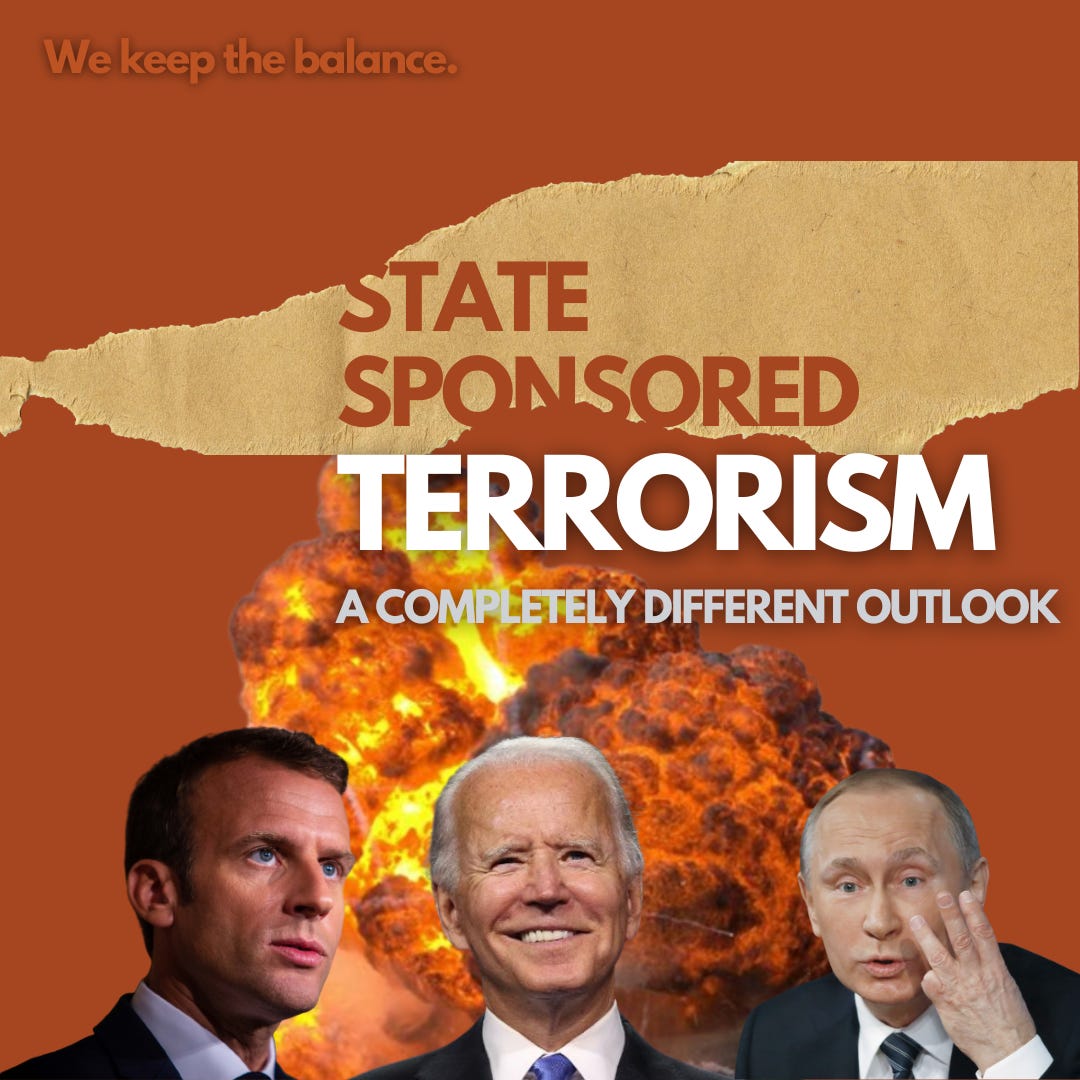State-sponsored terrorism: A different outlook.

💡
This case study is written and compiled by Aryaneel Shivam, to present a different outlook towards state-sponsored terrorism. The complete case study and document are attached towards the end of this preview article.
“Terrorism is the calculated use of violence to create a general climate of fear in a population and thereby to bring about a particular political objective. Terrorism has been practised by political organizations with both rightist and leftist objectives, by nationalistic and religious groups, by revolutionaries, and even by state institutions such as armies, intelligence services, and police.”
SOURCE: Terrorism | Definition, History, & Facts | Britannica
Terrorism is not legally defined in all jurisdictions; the statutes that do exist, however, generally share some common elements. Terrorism involves the use or threat of violence and seeks to create fear, not just within the direct victims but among a broad audience. The degree to which it relies on fear distinguishes terrorism from both conventional and guerrilla warfare. Although conventional military forces invariably engage in psychological war against the enemy, their principal means of victory is the strength of arms. Similarly, guerrilla forces, which often rely on acts of terror and other forms of propaganda, aim at military victory and occasionally succeed (e.g., the Viet Cong in Vietnam and the Khmer Rouge in Cambodia). Terrorism proper is thus the calculated use of violence to generate fear, and thereby achieve political goals when direct military victory is not possible. This has led some social scientists to refer to guerrilla warfare as the “weapon of the weak” and terrorism as the “weapon of the weakest.”
FROM WIKIPEDIA (FOR BASIC UNDERSTANDING):
Terrorism, in its broadest sense, is the use of intentional violence and fear to achieve political or ideological aims. The term is used in this regard primarily to refer to intentional violence during peacetime or in the context of the war against non-combatants (mostly civilians and neutral military personnel).[1]
SOURCE: Terrorism - Wikipedia
TERMS TO LOOK UPON:
use or threat of violence and seeks to create fear
the calculated use of violence to generate fear
to achieve political goals when direct military victory is not possible.
use of intentional violence and fear to achieve political or ideological aims.
intentional violence during peacetime or in the context of the war against non-combatants
NOTE: The term “Terrorism” may not have a fixed meaning, but across all definitions and examples, the above-mentioned are the most common clauses to define terrorism.
HENCE: We will be focusing our case study strictly referring to the above terms and will try to look into the term from a different angle
A DIFFERENT OUTLOOK:
Whenever we talk about terrorism or non-state actors, we mainly refer to the groups that are concentrated in the regions of MENA or groups that are associated with 3rd the world countries and Developing Countries, Largely ignoring the 1st World Countries and Superpowers.
Why is it always that whenever we talk about state-sponsored terrorism and non-state actor groups, we target and blame Middle Eastern countries like Iran, Syria, Saudi Arabia, and Israel for sponsoring them, even after knowing that there is no fixed meaning to terrorism, and the same common terms can be used to blame the west and the 1st world countries too?
If we closely examine the above-given terms, we will realise that even the 1st world countries sponsor groups that match the above criteria.
💡
So let us now turn the tables, and examine and study some of these organisations and institutions and groups that are funded or sponsored by the 1st world countries, that are largely ignored and are not tagged as terrorist organisations and their acts are not categorised as terrorism.
State sponsored terrorism PART 1
This is the 1st part of the case-study, available for download for free




